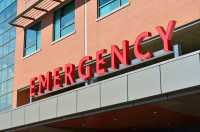Author Interviews, Beth Israel Deaconess, Emergency Care, Health Care Systems, JAMA / 05.11.2019
Decreased Hospital Admissions and Mortality Among Medicare Patients Visiting ERs
MedicalResearch.com Interview with:
 Laura Burke, MD, MPH
Department of Emergency Medicine
Beth Israel Deaconess Medical Center
Boston, MA 02215
MedicalResearch.com: What is the background for this study?
Response: There has been a lot of attention to the growing intensity and costs of emergency care, but relatively little study of how outcomes have changed in recent years for patients using the ED. We examined 30-day mortality rates for traditional Medicare beneficiaries age 65 and older using the emergency department (ED) from 2009-2016 and also examined how their rates of hospitalization have changed over time.
(more…)
Laura Burke, MD, MPH
Department of Emergency Medicine
Beth Israel Deaconess Medical Center
Boston, MA 02215
MedicalResearch.com: What is the background for this study?
Response: There has been a lot of attention to the growing intensity and costs of emergency care, but relatively little study of how outcomes have changed in recent years for patients using the ED. We examined 30-day mortality rates for traditional Medicare beneficiaries age 65 and older using the emergency department (ED) from 2009-2016 and also examined how their rates of hospitalization have changed over time.
(more…)
 Laura Burke, MD, MPH
Department of Emergency Medicine
Beth Israel Deaconess Medical Center
Boston, MA 02215
MedicalResearch.com: What is the background for this study?
Response: There has been a lot of attention to the growing intensity and costs of emergency care, but relatively little study of how outcomes have changed in recent years for patients using the ED. We examined 30-day mortality rates for traditional Medicare beneficiaries age 65 and older using the emergency department (ED) from 2009-2016 and also examined how their rates of hospitalization have changed over time.
(more…)
Laura Burke, MD, MPH
Department of Emergency Medicine
Beth Israel Deaconess Medical Center
Boston, MA 02215
MedicalResearch.com: What is the background for this study?
Response: There has been a lot of attention to the growing intensity and costs of emergency care, but relatively little study of how outcomes have changed in recent years for patients using the ED. We examined 30-day mortality rates for traditional Medicare beneficiaries age 65 and older using the emergency department (ED) from 2009-2016 and also examined how their rates of hospitalization have changed over time.
(more…)




